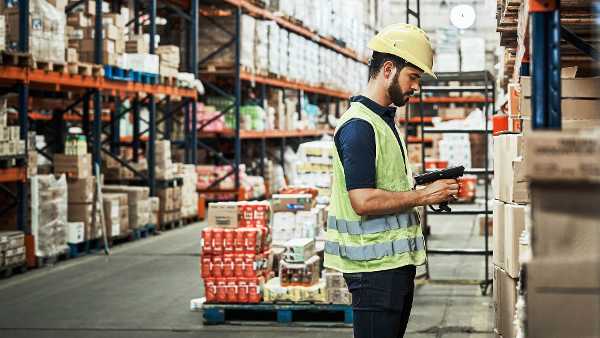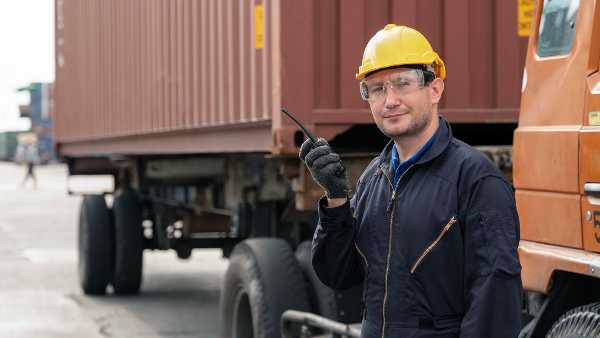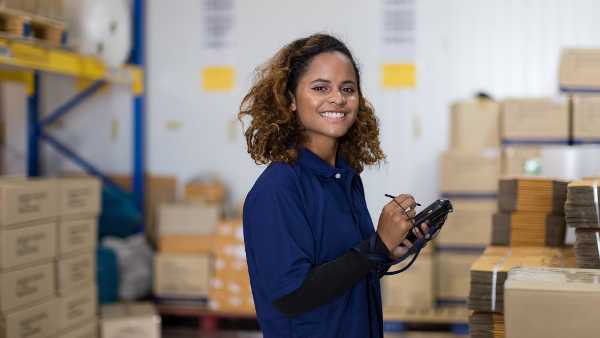How to determine the correct customs value of an import shipment

- Marcel Hoebink
- How to
- Edited 29 August 2025
- 6 min
- Managing and growing
- International
Samantha Zwart knows like no other how difficult it can be to determine the right customs value when filling in an import declaration. “95% of the time, you have to look at the transaction value of the imported goods.”
The customs value is the value of goods when they enter the EU. This is the sum of the price you pay the supplier for the goods, also known as the transaction value, and the shipping and insurance costs to the port or border of entry into the EU. As the co-owner of customs consulting and law firm Customs Knowledge BV, Samantha Zwart is a true expert when it comes to working out the customs value of goods.
Value of goods
For most goods imported from non-EU countries you pay 'ad valorem' import duties. Ad valorem means 'value-based'. This means that import duties are a certain percentage of the customs (in Dutch) of imported goods. According to Zwart, valuing goods is made particularly difficult because “you may have to add or subtract certain costs to work out the exact customs value.”
The customs value of goods is based on what you paid your supplier. But what if the goods were shipped for free? Zwart explains: “For a shipment with free products to replace defective or unsuitable products from a previous delivery, you as an importer must also determine the customs value. Because a product always represents value for customs.”
A small number of products are subject to specific duties rather than the ad valorem regime. “In that case, the importer has to pay duties based on net weight or dimensions, rather than on the value of the goods. You still have to work out the customs value, because you need it to work out how much VAT is due upon importation.”
Transaction value
There are six (in Dutch) you can use to work out the customs value. According to Zwart, the method based on the transaction value of the imported (in Dutch) is used 95% of the time. You can only use this method in case of a buy-sale transaction. “A prerequisite for using this method is that the transaction value - the price you paid for the goods - has to be realistic. The supplier is not allowed to manipulate the price by selling the goods for an unrealistically low price. This occasionally happens between related parties, such as parent companies and their subsidiaries.”
What costs to add
In most transactions, the price the importer paid for the goods is known. If the transaction value of the goods is €20,000 and the shipping and insurance costs to the external border of the EU are €5,000, the customs value is €25,000. In some cases, you have to add items to the transaction (in Dutch), such as packaging costs or licensing costs.
Zwart explains some of the costs: “If packaging costs are billed separately and are not included in the invoice price of the goods, you still have to add them to the transaction value.” The same goes for royalties and licence fees. You pay this for using another party's intellectual property, such as protected brand names, logos, or images on products.
What to leave out
You are also allowed to leave certain items (in Dutch) of the transaction value, such as shipping after entry into the EU. “It can be difficult to divide shipping costs into non-EU and EU components”, Zwart notes. “Suppose an air shipment from Moscow arrives at Schiphol. Strictly speaking, the plane entered the EU in Poland, which means you only have to add the costs for shipping from Moscow to the EU’s external border in Poland. In most cases, only the shipping costs for the full route will be listed on the invoice. To shed more light on the costs incurred between Moscow and the EU external border, the European Commission uses percentages (Annex 23-01). These percentages express that part of the air freight cost that you have to add to the customs value.”
Free products also have a customs value.
Customs value and Incoterms®
By adopting Incoterms®, buyers and sellers know exactly which of the two is responsible for arranging transportation and bearing the risk of damage to, or loss of, the goods during transportation. Customs value and Incoterms® are inextricably linked, as Zwart explains: “If you and your Moroccan supplier adopt 'Incoterms® Free Carrier (FCA) Port of Casablanca', you are responsible for arranging transportation from the port of Casablanca to your company in the Netherlands. As a result, you have to add the shipping costs from Casablanca to the first port of entry into the EU, so Rotterdam, in the customs value. If, on the other hand, you adopt 'Incoterms® Delivered At Place (DAP) Breda', your Moroccan supplier will take care of transportation up to Breda. With this Incoterm®, you can leave the shipping costs from the first port of entry into the EU, say Rotterdam, to the destination Breda out of the customs value.”
Supplier-dependent
In the above example, the Moroccan supplier arranges transportation to Breda under Incoterms® Delivered At Place (DAP), which means that you, the importer, will usually have no idea of the shipping costs between Rotterdam and Breda.
So how do you know what to leave out of the customs value? “You will have to get the information from your supplier. Have the supplier agree to mention the Incoterms® rule on the invoice. In this example, you would get an invoice marked 'DAP Breda, Netherlands, Incoterms® 2020'. Secondly, ask your supplier for a breakdown of shipping costs on your invoice to find out exactly how much they spent on road transportation. In this case, this would be the leg from the port of Rotterdam - the point of entry into the EU - to the destination in Breda.”
Chain transactions
The customs value is the price of goods to be imported at the EU's external border, so the transaction in which the goods were sold into the EU is used to work out their customs value. In transactions with a single seller (from a non-EU country) and a single buyer (in an EU country), that is the transaction in which the goods are sold into the EU. But how do you work out the customs value when there are more than two parties involved in a transaction?
Example
A U.S. supplier (A) sells a product to a Dutch company (B). The sale between A and B is considered a sale for export to the EU. After the goods arrive in the EU but before they are imported, the Dutch company (B) sells the goods to its Dutch buyer (C). Buyer (C) becomes the importer and imports the goods.
Zwart explains: “In this example, you have to look at the transaction between A and B before valuing the goods, as this is the transaction in which the goods are sold into the EU. The problem is that importer C, who is responsible for working out the customs value, does not have the invoice between A and B. In this case, the importer cannot use the valuation method based on the transaction value of the imported goods and will use the invoice they get from company B instead. This inflates the value of the goods and will result in C paying more import duties than necessary.”
Other valuation methods
Working out customs value with methods 2 to (in Dutch) is much less common, according to Zwart. “These methods are used for supplies where there was no buy-sell transaction or where the price was manipulated. A mandatory order of preference applies, which means you should always start with method one and only consider using another method if the previous method or methods are impossible. Only methods 4 and 5 may be applied in reverse."
Zwart gives some examples: “If you previously ordered a product that broke during the warranty period and the supplier sends you a new, identical product free of charge, you can use method 2, the transaction value of identical (in Dutch). If the replacement product is not identical, but a different version of the previously delivered product, method 3, the transaction value of similar (in Dutch), is an appropriate way to work out its customs value under certain conditions.”
Price manipulation occasionally occurs in inter-company transactions, for example when a parent company sells goods to a subsidiary for a very low price. “In those cases, it is more common to use method 4, the back calculation (in Dutch), or method 5, the cost-plus (in Dutch).
E-commerce
E-commerce companies moving their stock to the EU are more likely to use method 6, the reasonable (in Dutch) method. E-commerce companies often opt to move goods into the EU before they are sold to achieve fast delivery times. The goods are released for free circulation and then stored in a distribution centre. “When these goods enter the EU, there is no buy-sell transaction yet. Instead, importers use sales prices of products offered by sellers on platforms such as Amazon to work out the customs value of their own goods.”
Importer responsibility
Finally, Zwart has one important piece of advice about the importer’s responsibilities. “Many importers outsource the formalities of clearing goods to a customs broker, who will usually file declarations in the importer's name. The importer remains liable for the accuracy of the customs value declared in the import declaration. Undervalued customs values will lead to post-clearance assessments if customs decide to conduct an audit. That is the last thing you want as an importer, because you probably did not factor in the extra costs into your selling price. That is why it is so important for importers to read up on customs value, too, in order to prevent unwelcome surprises."


